Minh Trang, Master in Economia
Ministro degli Affari Esteri del Vietnam
Attirare investimenti stranieri diretti (FDI) è sempre stata una parte chiave dei rapporti economici esteri del Vietnam. Il Vietnam ha già molti vantaggi competitivi, un forte clima per gli investimenti e sta lavorando duramente per diventare ancora più seducente agli occhi degli investitori stranieri. Il governo vietnamita sta facendo questo rinnovando vigorosamente l’ambiente del business e degli investimenti, e riconoscendo che il settore degli FDI è una parte integrale dell’economia – essenziale per ristrutturare l’economia ed ottenere la competitività nazionale. Il settore degli FDI conta attualmente per il 18% del PIL, il 46,3% del valore dell’industria ed il 66,2% di quello dell’export, e sta creando lavoro per più di 1,7 milioni di dipendenti.
Nel 2014 gli investimenti stranieri diretti nel Vietnam per gli ultimi 11 mesi hanno mantenuto uno slancio costante, con un esborso pari a 11,2 miliardi di dollari, fino al 6,2% comparato allo stesso periodo del 2013. Gli FDI stanno raggiungendo il target annuale di 12,5 miliardi di dollari. La figura mostra che il provento degli FDI ha mantneuto uno slancio costante, tenendosi nella media di 1 miliardo di dollari al mese. Contando sia i capitali appena registrati che quelli aggiunti, gli investitori stranieri hanno riversato 17,33 miliardi di dollari in Vietnam nell’ultimo periodo di 11 mesi, pari all’83,3% di quello del 2013. Il 20 novembre 1427 progetti di FDI hanno ricevuto certificati per gli investimenti con un totale di capitali registrati di 13,41 miliardi di dollari, mentre 515 progetti sono registrati per accrescere il capitale, con una crescita totale di 3,92 miliardi di dollari. L’export nel settore degli FDI (compreso il greggio) negli ultimi 11 mesi ha raggiunto più di 92,21 miliardi di dollari, fino al 14,1% e contando per il 67,3% dell’export totale del paese. Le importazioni legate agli FDI hanno totalizzato più di 76,67 miliardi di dollari, fino al 12,5%. Da gennaio a novembre, il settore degli FDI ha visto un surplus commerciale di 15,54 miliardi di dollari.
Gli FDI nei settori primari
Le industrie manifatturiere e di trasformazione hanno attirato la maggior parte degli investimenti dagli investitori stranieri con 689 recenetemente registrati progetti ed un totale di capitale registrato ed aggiunto di 13,15 miliardi di dollari, pari al 75,9% del totale del capitale registrato in 11 mesi. Il settore immobiliare è secondo con 32 progetti registrati con un investimento totale di 1,27 miliardi di dollari, seguito dal settore delle costruzioni con un capitale totale registrato ed aggiunto di 1,02 miliardi di dollari.
Attualmente, ci sono più di 9400 progetti attivi di manifattura in Vietnam con un capitale registrato pari a 138,5 miliardi di dollari. Fra 80 paesi e territori che investono nel settore manifatturiero, il Giappone è il più grande investitore, con più del 50% del capitale totale pari a 30,58 miliardi di dollari per 1282 progetti. I progetti manifatturieri sono prevalentemente concentrati nella regione meridionale, inclusa Dong Naj, Binh Duong, Ho Chi Minh City e Ba Ria-Vung Tau. La provincia di Dong Nai è attualmente sede di più di 1100 progetti con un capitale totale di 17,2 miliardi di dollari, pari al 12,4% dell’investimento totale nel manifatturiero[1].
In Vietnam, l’agricoltura è un settore importante. Nel 2014, ci sono stati 516 progetti di FDI effettivi nei settori agricolo, forestale e della pesca, con un capitale totale registrato di 3,6 miliardi di dollari, pari al 3% di tutti I progetti e quasi l’1,5% del capitale registrato totale. Ma non è difficile riconoscere le cause che hanno condotto al recente calo degli FDI nell’agricoltura. La struttura povera del sistema per gli investimenti agricoli ha scoraggiato gli investitori mentre il numero di lavoratori agricoli esperti è ancora basso. Inoltre, ci sono ancora molti passi da fare nell’autorizzazione degli investimenti, nella produzione e nel business generale. Sulla situazione appena citata, l’attrazione di FDI nell’agricoltura è ancora considerata positiva e capace di crescere consistentemente in futuro. Negoziando la Partnership Trans-Pacifica, il Vietnam ha visto molto paesi puntare ad essere suoi cruciali partner agricoli. Comunque, non è facile realizzare questo compito.
Gli FDI nelle aree primarie
Tutte le 63 province e città della nazione hanno progetti di FDI, con 27 località che raggiungono un capitale registrato oltre ad 1 miliardo di dollari.
La provincia di Thai Nguyen è la principale destinazione per gli investimenti stranieri con un capitale registrato totale di 3,27 miliardi di dollari, pari al 18,9% del totale del paese. Nel novembre del 2014 le autorità di Thai Nguyen hanno emesso un certificato d’investimento per Samsung Electronics Vietnam Thai Ngueyn Co. (SEVT), per costruire una nuova fabbrica di telefoni cellulari, accanto al primo impianto da 2 miliardi di dollari, che ha iniziato ad essere operativo nell’aprile del 2014. Sebbene I dettagli del progetto da 3 miliardi di dollari non siano stati svelati, secondo alcune fonti l’impianto costruirà l’ultima generazione di telefoni cellulari. In base ai piani di Samsung, quando l’impianto diventerà operativo, il numero totale di lavoratori dei suoi tre stabilimenti in Vietnam raggiungerà I 100.000. Attualmente, il numero dei dipendenti della Samsung Thai Nguyen è di 23000. Questo progetto fra l’altro gode di alta preferenza, con condizioni in ricerca e sviluppo (R&D). In base ad una fonte, I 3 miliardi di dollari saranno spesi nei prossimi 5 anni o anche meno. La fonte dice anche che il progetto di Samsung Thai Nguyen vale per 1,5 miliardi di dollari dopo 1,5 anni di costruzione (dal tardo marzo 2013) per diventare uno degli investimenti stranieri col pià alto livello di capitalizzazione nel Vietnam. Col nuovo progetto, l’investimento totale della Samsung in Vietnam è pari a 11,2 miliardi di dollari, compreso due progetti da 2 e 3 miliardi di dollari a Thai Nguyen, un progetto da 2,5 miliardi di dollari a Bac Ninh, un progetto elettrico che vale 1,4 miliardi di dollari ad Ho Chi Minh City, un progetto per una fabbrica di chip e componenti elettroniche da 1,23 miliardi di dollari ad un progetto da 1 miliardo di dollari per schermi ad alta risoluzione. Attualmente, Samsung contribuisce per quasi il 20% dell’export totale del Vietnam. La Samsung è sulla strada di trasformare il Vietnam nella sua base manifatturiera globale e di diventare un “partner strategico” del Vietnam[2].
Ho Chi Minh City ha il secondo posto con un capitale totale registrato ed aggiunto di 3,01 miliardi di dollari[3]. Malgrado le difficoltà dell’economia nazionale, Ho Chi Minh City è un punto brillante per l’attrazione degli FDI. Secondo il Dipartimento per la Pianificazione e gli Investimenti (DPI) del Municipio, a novembre la città ha avuto 360 nuovi progetti di FDI con un investimento totale di 2,785 miliardi di dollari, fino al 195,56% comparato allo stesso periodo del 2013. Il capitale addizionato ai progetti esistenti ha raggiunto I 364 miliardi di dollari, ottenendo la promessa totale della città di raggiungere FDI nel 2014 per quasi 3,15 miliardi di dollari, fino al 97% rispetto allo stesso periodo dell’anno precedente ed eccedendo il target del 25,6%. Sufficientemente interessante, il settore manifatturiero continua a guidare l’attrazione degli FDI con promesse che raggiungono gli 1,646 miliardi o il 59,1% del totale. Il tasso di profitto degli FDI è stato anche molto alto. A settembre, il profitto degli FDI ha raggiunto quasi I 25 trilioni di VDN (1,18 miliardi di dollari), fino al 6,9% all’anno, mentre il profitto per tutto l’anno è atteso che raggiunga I 51 trilioni di di VND (2,4 miliardi di dollari)[4]. Comunque, non soddisfatti con gli attuali livelli raggiunti, I leader della città continuano ad introdurre molte misure per renderla più attraente per gli investitori stranieri.
Terza è Binh Duong con 1,42 miliardi di dollari. Molte imprese da FDI vi accrescono il loro capitale, centinaia di nuove sono diventate operative nella provincia. Solo a novembre del 2014, più di 180 milioni di dollari erano spesi in più di dieci progetti come lo shopping center Canary Binh Duong, fondato dalla giapponese Aeon e da una cartiera di Tomoku sempre a capitale giapponese. Hiroyuki Inoue, direttore generale della Daiyu Steel Vietnam al Parco Industriale di Tan Hiep Dong nella provincia di Binh Duong ha detto che la decisione della compagnia è di aprire uno stabilimento in Vietnam e che è una giusta scelta che il Vietnam provi una rapida crescita ed un’altrettanto veloce urbanizzazione.
Gli FDI nei settori primari
Più di 100 paesi e territori hanno investito nel paesi, inclusi 16 paesi e territori con un capitale registrato superiore ad 1 miliardo di dollari.
Attualmente, la Repubblica di Corea rimane il principale partner del Vietnam fra 60 paesi e territori con progetti di investimenti in Vietnam, ed un investimento totale di capitali appena registrati ed aggiunti per 6,82 miliardi di dollari. Il Gruppo Samsung della Corea del Sud ha investito 5,5 miliardi nel Vietnam sin dal debutto nel marzo del 2008. Se il progetto elettronico ad Ho Chi Minh City è approvato ed iniziato, il suo capitale d’investimento in Vietnam raggiungerà I 7 miliardi di dollari, diventando un investitore straniero massimo nel paese del Sud Est Asiatico. E’ stato pianificato per aggiungere altri 3 miliardi di dollari di espandere la sua produzione nella provincia di Thai Nguyen. Questo porterà l’export del Gruppo dal Vietnam a nuovi livelli. A parte un enorme investimento in campo elettrico, Samsung ha anche investito 950 milioni di dollari per costruire un cantiere navale in Vietnam.
Un altro grande investitore straniero è il Gruppo LG, anch’esso dalla Corea del Sud. Dang Thanh Tam, che si è concentrato nel tracciare il capitale d’investimento da LG, ha detto che questo gruppo sta pianificando di costruire una città high-tech in Vietnam. Kinh Bac City Development Holding Corporation, guidata da Tam, sta amministrando 11 parchi industriali dove ci si aspetta di attirare 2 miliardi di FDI nel 2015. LG Group sta anche investendo 1,5 miliardi di dollari nel Trang Due Industrial Park nella città industriale di Haiphong. LG e Kinh Bac hanno anche siglato un memorandum di comprensione nel realizzare un progetto pilota in questo parco industriale per 650 miliardi di VND. Molti parchi industriali hanno anche firmato MoUS in progetti d’investimento con valori stimati in miliardi di dollari[5].
Singapore è il secondo con un investimento totale di 2,75 miliardi di dollari. Noi possiamo prendere un esempio dagli investimenti di Singapore in Vietnam: negli ultimi giorni del 2014, più di 5000 lavoratori di Esquel Garment Manufacturing Vietnam nel Vietnam-Singapore Industrial Park stanno lavorando sodo per completare I loro ordini per la fine dell’anno. Dopo una presenza di 14 anni in Vietnam, la compagnia ha raggiunto molti buoni risultati e sta pianificando di riversare una quota aggiuntiva di 35 milioni di dollari per elevare la sua capacità produttiva.
Il Giappone è terzo con un investimento totale di 1,71 miliardi di dollari. Un numero crescente di compagnie giapponese operanti in vari settori hanno visitato ed esplorato le opportunità d’investimento in Vietnam, un segnale incoraggiante nell’attuale e difficile contesto economico. Così quest’anno ci sono molte delegazioni di anziani ufficiali dal Giappone incluso il capo della regione economica di Kansai, quello del Dipartimento del Commercio e dell’Industria Toshinori Kobayashi, il ministro dell’agricoltura, delle foreste e della pesca Koya Nishikawa, il ministro dell’ambiente Yoshio Michizuki, che sono giunti in Vietnam per esplorare le possibilità di cooperazione negli affari. Rappresentanti delle compagnie giapponese hanno anche affermato che in aggiunta all’espandere I mercati per l’export, le compagnie giapponesi dovranno anche velocizzare l’investimento nelle industrie di supporto (SI) col trend di scambiare I loro investimenti dalla Cina al Vietnam.
Negli ultimi 11 mesi, gli investitori americani hanno riversato 248 miliardi di dollari in 38 progetti in Vietnam. L’ultima aggiunta ha aiutato il capitale d’investimento registrato americano a raggiungere I 10,92 miliardi di dollari, con una media di 15,35 miliardi di dollari per progetto. Durante il periodo monitorato, è stato detto che il settore dell’ospitalità, del cibo e dei ristoranti ha attirato 4,67 miliardi di dollari, equivalente al 42,8% del totale del capitale d’investimento americano in Vietnam. E’ seguito dal settore manifatturiero e della trasformazione con 2,2 miliardi di dollari, o il 20% del totale del capitale americano registrato, ed il settore immobiliare con 2,05 miliardi di dollari, o il 18% del capitale americano. Gli investitori americani hanno investito in 41 delle 63 città e province del paese. Fra queste località, la provincia meridionale di Ba Ria-Vung Tau era la più attraente destinazione per gli investimenti e gli affari americani con 18 progetti, valutati 5,3 miliardi di dollari. La città settentrionale e portuale di Hai Phong ha il secondo posto, con 13 progetti pari a 1,2 miliardi di dollari, e la provincia meridionale di Binh Duong viene terza, con 96 progetti valutati 779 milioni di dollari[6].
Prospetti per gli FDI in Vietnam
Nel momento in cui l’economia mondiale si sta riprendendo più lentamente del previsto e molti investitori stanno ancora incontrando difficoltà finanziarie, è un buon segno che il Vietnam continui a vedere una crescita costante degli FDI. Il Vietnam ha un numero di fattori favorevoli per attirare gli FDI.
Primo, il Vietnam ha assicurato stabilità socio-politica, ed è conosciuto per essere una delle economie più dinamiche. La crescita economica fra il 1991 ed il 2010 ha avuto una media del 7,5% per ogni anno e, nonostante le molte difficoltà incontrate dal paese tra il 2011 ed il 2013, la crescita del PIL ancora raggiunge il 5,6%. Molte fonti interne suggeriscono che questo trend continuerà anche nel 2014-2015 ed oltre.
Secondo, il Vietnam è ora in un perido dorato per quanto riguarda la struttura della sua popolazione in età da lavoro. Ha anche una favorevole collocazione geografica giusto nel cuore dell’Asia Orientale – sede di un ampio numero di forti e vigorose economie. Inoltre, il paese è un’economia di mercato, un membro del WTO e membro di molte piattaforme per l’integrazione economica internazionale, compresi gli accordi di libero commercio con partner sia interni che esterni alla regione. In particolare, il paese è parte delle negoziazioni per la Partnership Trans-Pacifica. Questi fattori tutti insieme spiegano perché così tanti scelgano d’investire in Vietnam – e dovrebbero attirare ancor più investitori.
Terzo, il governo vietnamita è determinato a creare un ambiente di business giusto ed attraente per gli investitori stranieri, e sta costantemente migliorando la sua piattaforma legale e le istituzioni legate al business e agli investimenti. Il governo ha lavorato duro nella ristrutturazione dell’economia e del suo modello di crescita, così come nel potenziare la competitività nazionale.
Oggi, la nuova Legge sugli Investimenti recentemente adottata dall’Assemblea Nazionale si presume che creerà un nuovo clima per l’investimento. Nuovi emendamenti puntano a facilitare gli investitori stranieri nel creare un ambiente per gli investimenti in Vietnam più aperto e trasparente. Il cambiamento più notevole è la chiara definizione di quali business sono proibiti. Questo libererà gli investitori da ogni restrizione se il loro business non è nella lista dei settori bannati. Gli investitori stranieri sono anche beneficiati da più incentivi fiscali e da procedure amministrative semplificate.
Gli emendamenti alla Legge sugli Investimenti si presume che renderanno il Vietnam più attraente per gli investitori stranieri, facendo esplodere gli investimenti stranieri. Il Ministero della Pianificazione e degli Investimenti ha detto che una notevole aggiunta alla nuova legge è la lista degli affari proibiti e condizionali. Gli investitori possono ora condurre ogni affari non incluso nella lista. Un altro importante aspetto della legge è la specificazione di misure d’incentivo così come di ruoli, procedure e requisiti per gli incentivi. La nuova legge inoltre riduce il tempo massimo per la licenza di un investimento da 45 giorni garantiti a 15. Attraverso le modifiche alla Legge degli Investimenti, gli investitori stranieri sono cresciuti più confidenti nel clima del business in Vietnam e sondaggi recenti hanno evidenziato che la maggioranza degli investitori vuole espandere le sue operazioni in Vietnam. L’evidenza può essere chiaramente vista nei grandi progetti delle multinazionali come Samsung e LG.
Il governo vietnamita sta continuando a rivitalizzare il suo clima del business e degli investimenti. Una strada è data dai tre “sfondamenti strategici”: realizzare le istituzioni dell’economia di mercato ed una piattaforma legale; e sviluppare una forza lavoro di qualità. Tutto questo dovrebbe essere completato nel 2020. Il governo rimane determinato a realizzare le sue obbligazioni e a promuovere la negoziazione e la conclusione di una nuova generazione di accordi di libero commercio. Il Vietnam vede il successo delle imprese basate sugli FDI come il suo proprio successo. Così, il governo è determinato ad assicurare un ambiente socio-politico stabile, a proteggere i legittimi diritti ed interessi degli investitori, e creare un incoraggiante ambiente per le imprese da FDI nel paese.
Nel medio e lungo termine, il Vietnam continuerà i propri sforzi per attirare ed efficientemente usare i flussi economici degli FDI per avanzare lo sviluppo socio-economico. Il paese punterà ad investimenti FDI ad “alta qualità”, concentrandosi in progetti da FDI che usano tecnologie avanzate e rispettose dell’ambiente, e che useranno risorse naturali in un modo sostenibile. Inoltre punterà anche a progetti riguardanti prodotti competitivi che possono essere parte della rete di produzione globale.
Le previsioni internazionali indicano che come l’economia mondiale si riprende, i flussi degli FDI ritornano alle economie dinamiche. Dati i positivi presupposti per le economie sia regionali che globali, il Vietnam continuerà ad avere successo in quest’area[7]. Le aspettative sono molto alte.
Note:
[1] http://en.nhandan.org.vn/business/investment/item/2951002-new-investment-law-expected-to-boost-foreign-investment.html
[2] http://www.talkvietnam.com/2014/11/samsung-invests-3-billion-more-in-vietnam/
[3] http://en.nhandan.org.vn/business/investment/item/2960502-fdi-disbursement-increases-by-6-2-year-on-year.html
[4] http://en.nhandan.org.vn/business/investment/item/2977402-ho-chi-minh-city-bright-spot-in-foreign-investment-attraction.html
[5] http://vccinews.com/news_detail.asp?news_id=31341
[6] http://en.nhandan.org.vn/business/investment/item/2985502-us-investment-at-us$248-million-in-11-months.html
[7] http://en.nhandan.org.vn/business/investment/item/2917202-vietnam-has-great-potential-for-attracting-foreign-investment.html
Riferimenti
1/ Attracting FDI to the agricultural sector
http://en.nhandan.org.vn/business/investment/item/3008302-attracting-fdi-to-the-agricultural-sector.html
2/ FDI in Vietnam’s agriculture on its downtrend
http://news.xinhuanet.com/english/business/2014-10/08/c_133699293.htm
3/ FDI into Vietnam: New Developments with No New Faces
http://vccinews.com/news_detail.asp?news_id=31258
4/ Manufacturing accounts for more than half of FDI inflow
http://en.nhandan.org.vn/business/investment/item/2998802-manufacturing-accounts-for-more-than-half-of-fdi-inflow.html
5/ Real Estate Attracts High Level of FDI into Vietnam
http://www.vietnam-briefing.com/news/real-estate-attracts-high-level-fdi-vietnam.html/
6/ Why foreign investment in Vietnam is booming
https://forumblog.org/2014/05/foreign-investment-booming-vietnam/
7/ http://www.state.gov/documents/organization/229305.pdf
Versione inglese
FDI into Vietnam in 2014
Minh Trang, Master of Economics
Vietnam’s Ministry of Foreign Affairs
Attracting foreign direct investment (FDI) has always been a key part of Vietnam’s external economic affairs. Vietnam already has many comparative advantages, a strong investment climate and is working hard to become even more appealing to foreign investors. The Vietnamese government is doing so by vigorously renovating the business and investment environment, and by recognizing that the FDI sector is an integral part of the economy – essential to restructuring the economy and raising national competitiveness. The FDI sector currently accounts for over 18% of GDP, 46.3% of industrial output value at current prices, and 66.2% exports, while creating jobs for more than 1.7 million employees.
In 2014, FDI into Vietnam over the last 11 months has maintained steady momentum with disbursement totaling US$11.2 billion, up 6.2% compared to the same period in 2013. FDI is approaching the full-year target of US$12.5 billion. The figure shows that FDI disbursement has been maintained a steady pace, averaging out at US$1 billion each month. Both newly-registered and added capital, foreign investors have poured US$17.33 billion in Vietnam over the last 11 month period, equaling to 83.3% of that in 2013. As of November 20, 1,427 FDI projects have received investment certificates with a total registered capital of US$13.41 billion, while 515 projects are registered to increase capital, with a total increase funding of US$3.92 billion. Exports in the FDI sector (including crude oil) in the past 11 months reached more than US$92.21 billion, up 14.1% and accounting for 67.3% of the country’s total export turnover. Imports by FDI enterprises totaled over US$76.67 billion, up 12.5%. From Jan-Nov, the FDI sector enjoys a trade surplus of US$15.54 billion.
FDI in the primarily sectors
Processing and manufacturing industries have attracted the most investment from foreign investors with 689 newly-registered projects and a total registered and added capital of US$13.15 billion, accounting for 75.9% of total registered capital in the 11 months. Real estate ranked second with 32 projects registered with a total investment of US$1.27 billion, followed by the construction sector with a total registered and added capital of US$1.02 billion.
Currently, there are more than 9,400 active manufacturing projects in Vietnam with registered capital totalling US$138.5 billion. Among 80 countries and territories investing in the manufacturing sector, Japan is the largest investor, accounting for more than one fifth of total capital with US$30.58 billion in 1,282 projects. Manufacturing projects are mainly concentrated in the southern region, including Dong Nai, Binh Duong, Ho Chi Minh City and Ba Ria-Vung Tau. Dong Nai province is currently home to more than 1,100 projects with total capital of US$17.2 billion, accounting for 12.4% of total investment in manufacturing[1].
In Vietnam, agriculture is a important sector. In 2014, there are 516 effective FDI projects in agro-forestry-fisheries sectors with a total registered capital of US$3.6 billion, accounting for 3% of all projects and nearly 1.5% of the total registered capital. But it is not difficult to recognise causes leading to the recent reduction of FDI in agriculture. Poor structuring of the system for agricultural investment has discouraged investors while the number of skilled agricultural workers is still low. In addition, there are too many steps in licensing investment, production and general business. In the above-mentioned situation, FDI attraction to agriculture is still assumed to be positive and able to increase sharply in the future. When negotiating the Trans-Pacific Partnership, Vietnam saw many countries looking to become its crucial agricultural partner. However, it is not easy to accomplish this task.
FDI in the primarily areas
All 63 provinces and cities nationwide have FDI projects, with 27 localities recording registered capital of over US$1 billion.
Thai Nguyen province is a top destination for foreign investment with total registered capital of US$3.27 billion, accounting for 18.9% of the country’s total. November 11, 2014, the authorities of Thai Nguyen province will grant an investment certificate for Samsung Electronics Vietnam Thai Nguyen Co., (SEVT), to build a new mobile phone factory, besides the first $2 billion plant, which began operational in April 2014. Although the details of the $3 billion project have not been disclosed, according to some sources, the plant will manufacture the latest generation mobile phones. According to Samsung’s plans, when the plant goes into operation, the total number of workers of its three mobile phone factories in Vietnam will reach 100,000. Currently, the number of its employees at Samsung Thai Nguyen is 23,000. This project also enjoys the highest preference, with conditions on research and development (R & D). According to a source, the $3 billion will be disbursed over five years or even shorter. The source also said that Samsung Thai Nguyen project has disbursed about $1.5 billion after 1.5 years of construction (from late March 2013) to become one of the foreign-invested projects with the fastest rate of disbursement in Vietnam. With the new project, Samsung’s total investment in Vietnam is up to $11.2 billion, including a $2 and a $3 billion mobile phone project in Thai Nguyen, a $2.5 billion project in Bac Ninh, an electronic project worth $1.4 billion in HCM City, a $1.23 billion chip and electronic component project and a $1 billion high resolution screen project. Currently, Samsung contributes up to nearly 20% of the total export turnover of Vietnam. Samsung is on the process of turning Vietnam into its global manufacturing base and becoming a “strategic partner” of Vietnam[2].
Ho Chi Minh City ranks second with a total registered and added capital of US$3.01 billion[3]. Despite the difficulties of the national economy, Ho Chi Minh City is a bright spot in FDI attraction. According to the municipal Department of Planning and Investment (DPI), as of November the city had 360 new FDI projects with total investment of US$2.785 billion, up 195.56% compared with the same period in 2013. The additional capital to existing projects reached US$364.8 million, raising the city’s total FDI pledges in 2014 to nearly US$3.15 billion, up 97% from the previous year and exceeding the target by 25.6%. Interestingly enough, the manufacturing sector continues to lead FDI attraction with pledges reaching US$1.646 billion or 59.1% of the total. The rate of FDI disbursement was also high. As of September, FDI disbursement reached nearly VND25 trillion (US$1.18 billion), up 6.9% year on year, while full-year disbursement is expected to reach VND51 trillion (US$2.4 billion)[4]. However, not complacent with current achievements, the city leaders continue to introduce many measures to make it more attractive to foreign investors.
Binh Duong ranks third with US$1.42 billion. Many FDI enterprises increasing their capital, hundreds of new ones have come into operation in Binh Duong province. In November 2014 alone, more than US$180 million was disbursed in more than ten projects such as the Canary Binh Duong shopping centre, funded by Japan’s Aeon and a paper mill of Tomoku from Japan. Hiroyuki Inoue, general director of Daiyu Steel Vietnam at the Tan Hiep Dong Industrial Park in Binh Duong province said that the company’s decision to open a manufacturing factory in Vietnam is a right choice as Vietnam is experiencing fast growth and rapid urbanisation.
FDI of the primarily partners
More than 100 countries and territories have invested in the country, including 16 countries and territories with registered capital of over US$1 billion.
Currently, the Republic of Korea remains Vietnams’ top partner among 60 countries and territories with investment projects in Vietnam, and a total investment of newly-registered and added capital of US$6.82 billion during the period. South Korea’s Samsung Group has invested US$5.5 billion into Vietnam since it made a debut in March 2008. If the electronic project in Ho Chi Minh City is approved and commenced, its investment capital in Vietnam will reach US$7 billion, becoming a top foreign investor in the Southeast Asian country. It has planned to pour additional US$3 billion to expand its production facility in Thai Nguyen province. This will lift the group’s export turnover in Vietnam to a new high. Apart from huge electronic investments, Samsung also invested US$950 million to build a shipyard in Vietnam.
Another big foreign investor is LG Group, also from South Korea. Dang Thanh Tam, who has focused on drawing investment capital from LG, said this group is planning to build a high-tech city in Vietnam. Kinh Bac City Development Holding Corporation, led by Tam, is administering 11 industrial parks which are expected to attract US$2 billion of FDI by 2015. LG Group also invested US$1.5 billion into Trang Due Industrial Park in northern Haiphong City. LG and Kinh Bac also signed a memorandum of understanding on leasing a land plot in this industrial park for VND650 billion. Many industrial parks have also signed MoUs on investment projects with pledged value amounting to billions of US$[5].
Singapore is in second with a total investment of US$2.75 billion. We can take an example of Singapore’s investment into Vietnam: In the final days of 2014, more than 5,500 workers of Esquel Garment Manufacturing Vietnam in the Vietnam-Singapore Industrial Park are hustling to complete their year-end orders. After a 14-year presence in Vietnam, the company has recorded many good results and is planning to pour an additional US$35 million to raise its production capacity.
Japan is third with a total investment of US$ 1.71 billion. An increasing number of Japanese companies operating in various fields have been visiting and exploring investment opportunities in Vietnam, an encouraging signal in the current difficult economic context. So far this year, there are many delegations of senior officials from Japan including head of Kansai region’s Economy, Trade and Industry Department, Toshinori Kobayashi; Minister of Agriculture, Forestry and Fisheries Koya Nishikawa; and Environment Minister Yoshio Mochizuki, who came to the Vietnam to explore business co-operation opportunities. Representatives of the Japanese companies also affirmed that in addition to expanding export markets, Japanese enterprises will speed up investment in supporting industries (SI) with the trend of shifing their investment from China to Vietnam.
Over the past 11 months, American investors have poured US$248 million into 38 projects in Vietnam. The latest addition has helped American registered investment capital in Vietnam to reach US$10.92 billion, with an average of US$15.35 million per project. During the reviewed period, it said that the hospitality, catering and restaurant sector attracted US$4.67 billion, equivalent to 42.8% of the total American investment capital in Vietnam. It was followed by the manufacturing and processing sector with US$2.2 billion, or 20% of the total American registered capital, and the real estate trading industry with US$2.05 billion, or 18% of the American capital. American investors have invested in 41 out of 63 cities and provinces nationwide. Among these localities, the southern Ba Ria – Vung Tau province was the most attractive investment destination for American businesses with 18 projects, worth US$5.3 billion, in the province. The northern port city of Hai Phong ranked second, with 13 projects worth US$1.2 billion, and the southern Binh Duong province came third, with 96 projects valued at US$779 million[6].
Prospects for FDI into Vietnam
As the world economy is recovering at a slower pace than expected and many investors are still running into financial difficulties, it is a good sign that Vietnam continues to see a steady inflow of FDI. Vietnam has a number of favorable factors to attract FDI are:
First, Vietnam has been securing socio-political stability, and is known to be one of the most dynamic economies. Economic growth between 1991 and 2010 averaged 7.5% each year and, despite the many difficulties the country faced between 2011 and 2013, GDP growth still rose by 5.6%. Several international forecasts suggest that this trend will continue in 2014-2015 and beyond.
Second, Vietnam is now in a period of golden population structure 60% of its population are working age. It also has a favourable geographical location right at the heart of East Asia – home to a number of large and vibrant economies. Furthermore, the country is a market economy, a member of the WTO, and a party to multiple frameworks for international economic integration, including free trade agreements with partners both within and outside the region. In particular, the country is part of the Trans-Pacific Partnership negotiations. These factors all go some way to explaining why so many choose to invest in Vietnam – and should draw in more foreign investors.
Third, the Vietnamese government is committed to creating a fair and attractive business environment for foreign investors, and constantly improving its legal framework and institutions related to business and investment. The government has been working hard on restructuring the economy and its model for growth, as well as enhancing national competitiveness.
Today, the new Law on Investment recently adopted by the National Assembly is expected to create a new wave of investment. New amendments aim to facilitate foreign investors by making the investment environment in Vietnam more open and transparent. The most notable change is the clear definition of which businesses are prohibited. This will free investors from any restrictions if their businesses are not on the banned list. Foreign investors are also entitled to more tax incentives and simplified administrative procedures.
Amendments to the Law on Investment are expected to make Vietnam more attractive to foreign investors, expected to boost foreign investment. The Ministry of Planning and Investment said a notable addition to the new law is the list of banned and conditional businesses. Investors can now conduct any business not included on the list. Another important facet of the law is the specification of incentive measures as well as rules, procedures and requirements for incentives. The new law also reduces the maximum time for an investment licence to be granted from 45 to 15 days. Throughout modifications to the Law on Investment, foreign investors have grown more confident in the business climate in Vietnam and recent surveys suggest that the majority of investors want to expand their operations in Vietnam. The evidence can be clearly seen in the big projects by multinationals such as Samsung and LG.
The Vietnamese government is continuing to revitalise its business and investment climate. One way it is doing this is its work on three “strategic breakthroughs”: putting in place market economy institutions and a legal framework; building an advanced and integrated infrastructure, particularly transport; and developing a quality workforce. These should all be completed by 2020. The government remains determined to fulfil its treaty obligations and promote the negotiation and conclusion of a new generation of free trade agreements. Vietnam views the success of FDI enterprises as its own success. As such, the government is committed to ensuring a stable socio-political environment, protecting the legitimate rights and interests of investors, and creating an enabling environment for FDI enterprises in the country.
In the medium and long term, Vietnam will continue in its efforts to attract and efficiently use FDI inflows to advance socio-economic development. The country will target “high quality” FDI inflows, focusing on FDI projects that use advanced and environmentally friendly technologies, and use natural resources in a sustainable way. It will also target projects with competitive products that could be part of the global production network and value chain.
International forecasts suggest that as the world economy recovers, FDI flows are returning to dynamic economies. Given the positive prospects for both global and regional economies, Vietnam will continue to find success in this area[7]. Expectations for a new wave of investment
Notes:
[1] http://en.nhandan.org.vn/business/investment/item/2951002-new-investment-law-expected-to-boost-foreign-investment.html
[2] http://www.talkvietnam.com/2014/11/samsung-invests-3-billion-more-in-vietnam/
[3] http://en.nhandan.org.vn/business/investment/item/2960502-fdi-disbursement-increases-by-6-2-year-on-year.html
[4] http://en.nhandan.org.vn/business/investment/item/2977402-ho-chi-minh-city-bright-spot-in-foreign-investment-attraction.html
[5] http://vccinews.com/news_detail.asp?news_id=31341
[6] http://en.nhandan.org.vn/business/investment/item/2985502-us-investment-at-us$248-million-in-11-months.html
[7] http://en.nhandan.org.vn/business/investment/item/2917202-vietnam-has-great-potential-for-attracting-foreign-investment.html
References
1/ Attracting FDI to the agricultural sector
http://en.nhandan.org.vn/business/investment/item/3008302-attracting-fdi-to-the-agricultural-sector.html
2/ FDI in Vietnam’s agriculture on its downtrend
http://news.xinhuanet.com/english/business/2014-10/08/c_133699293.htm
3/ FDI into Vietnam: New Developments with No New Faces
http://vccinews.com/news_detail.asp?news_id=31258
4/ Manufacturing accounts for more than half of FDI inflow
http://en.nhandan.org.vn/business/investment/item/2998802-manufacturing-accounts-for-more-than-half-of-fdi-inflow.html
5/ Real Estate Attracts High Level of FDI into Vietnam
http://www.vietnam-briefing.com/news/real-estate-attracts-high-level-fdi-vietnam.html/
6/ Why foreign investment in Vietnam is booming
https://forumblog.org/2014/05/foreign-investment-booming-vietnam/
7/ http://www.state.gov/documents/organization/229305.pdf
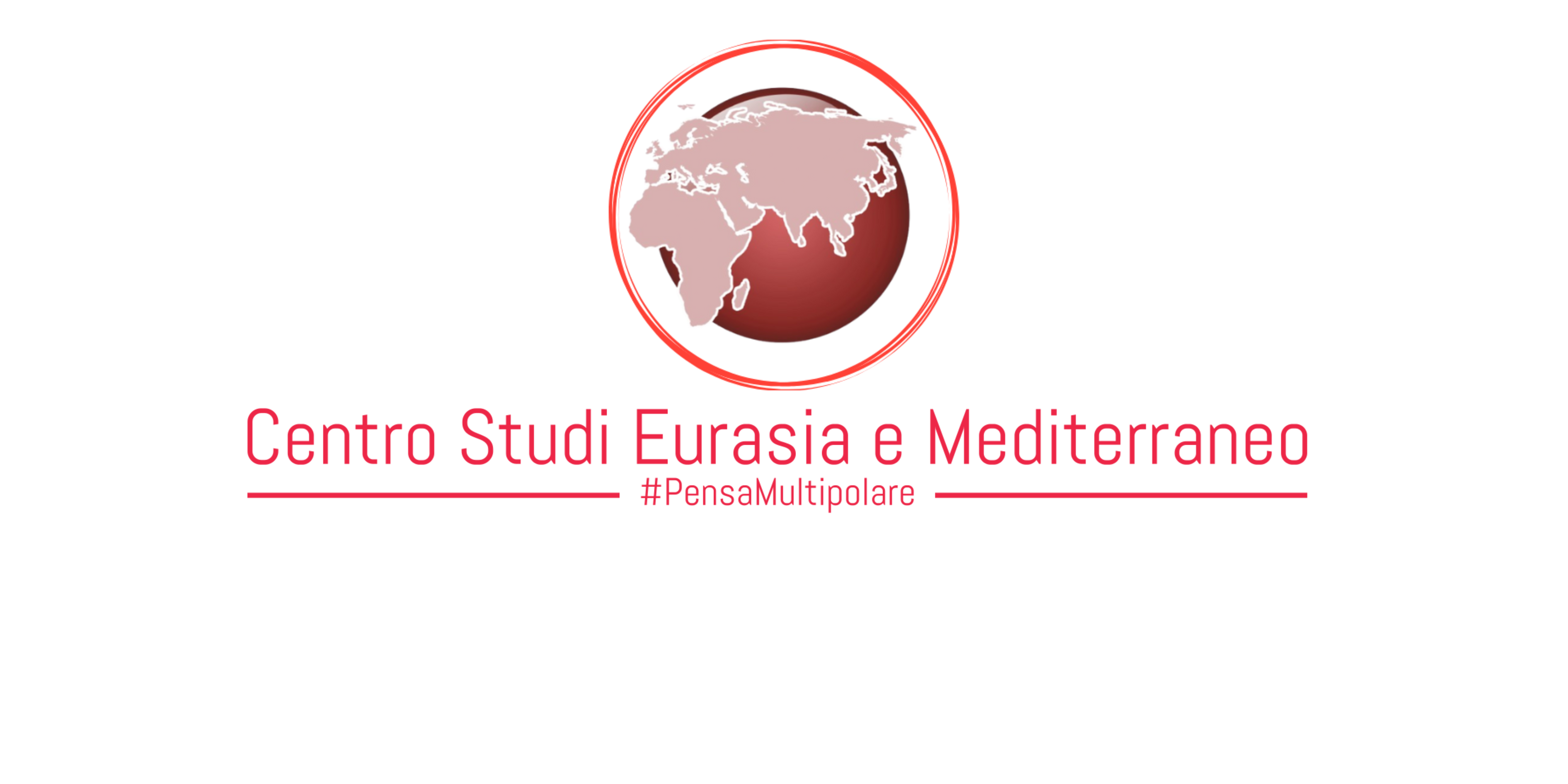
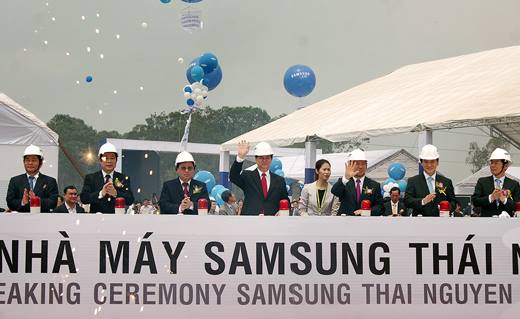


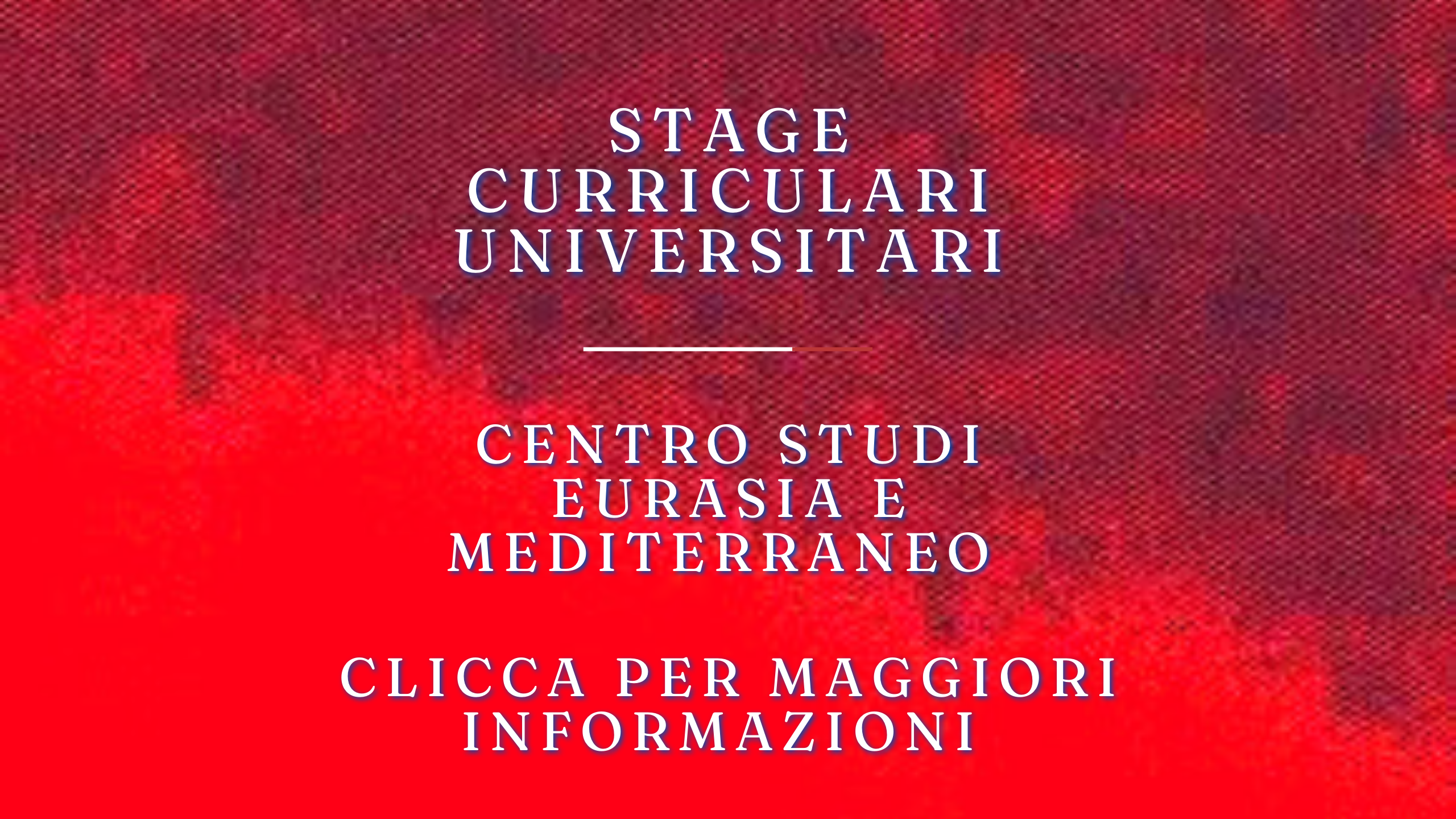

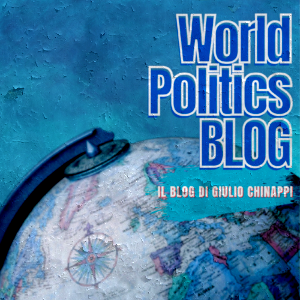


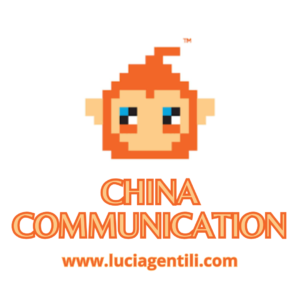







Il CeSE-M sui social